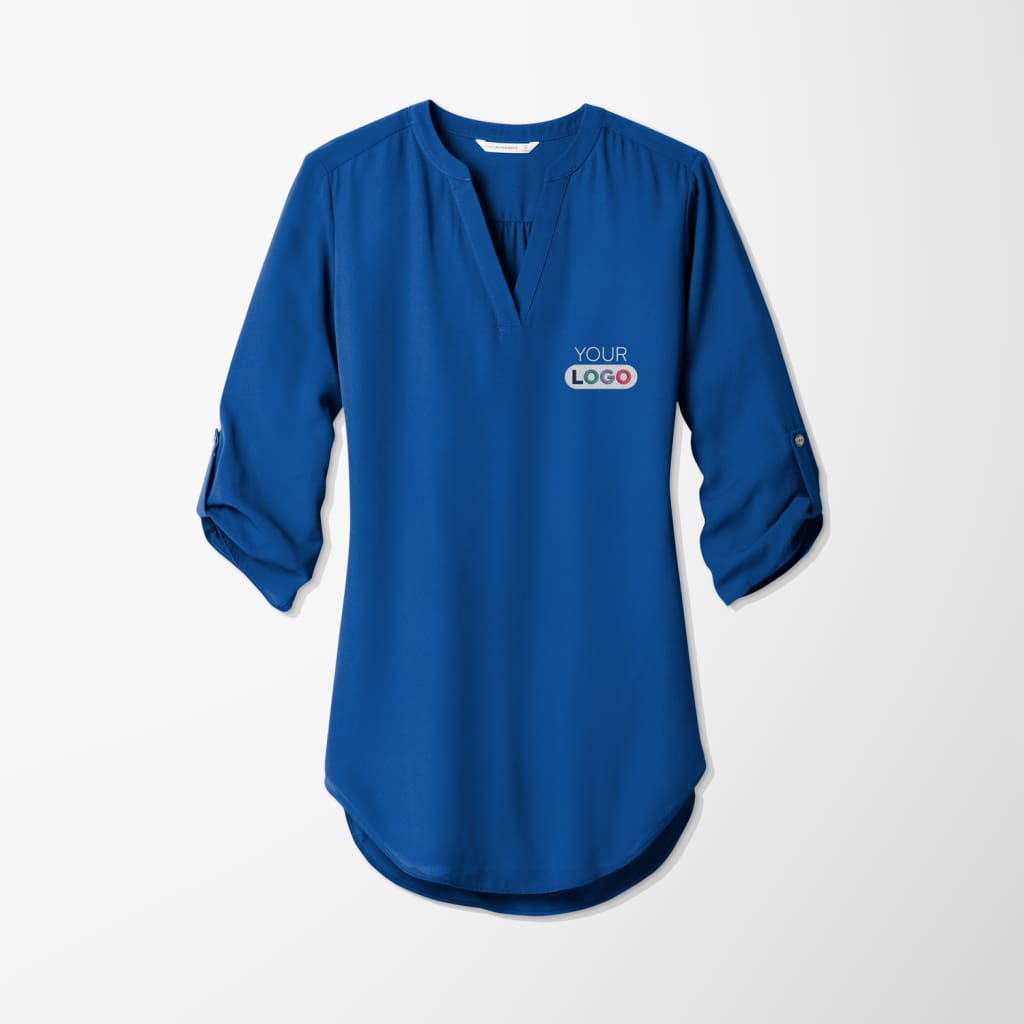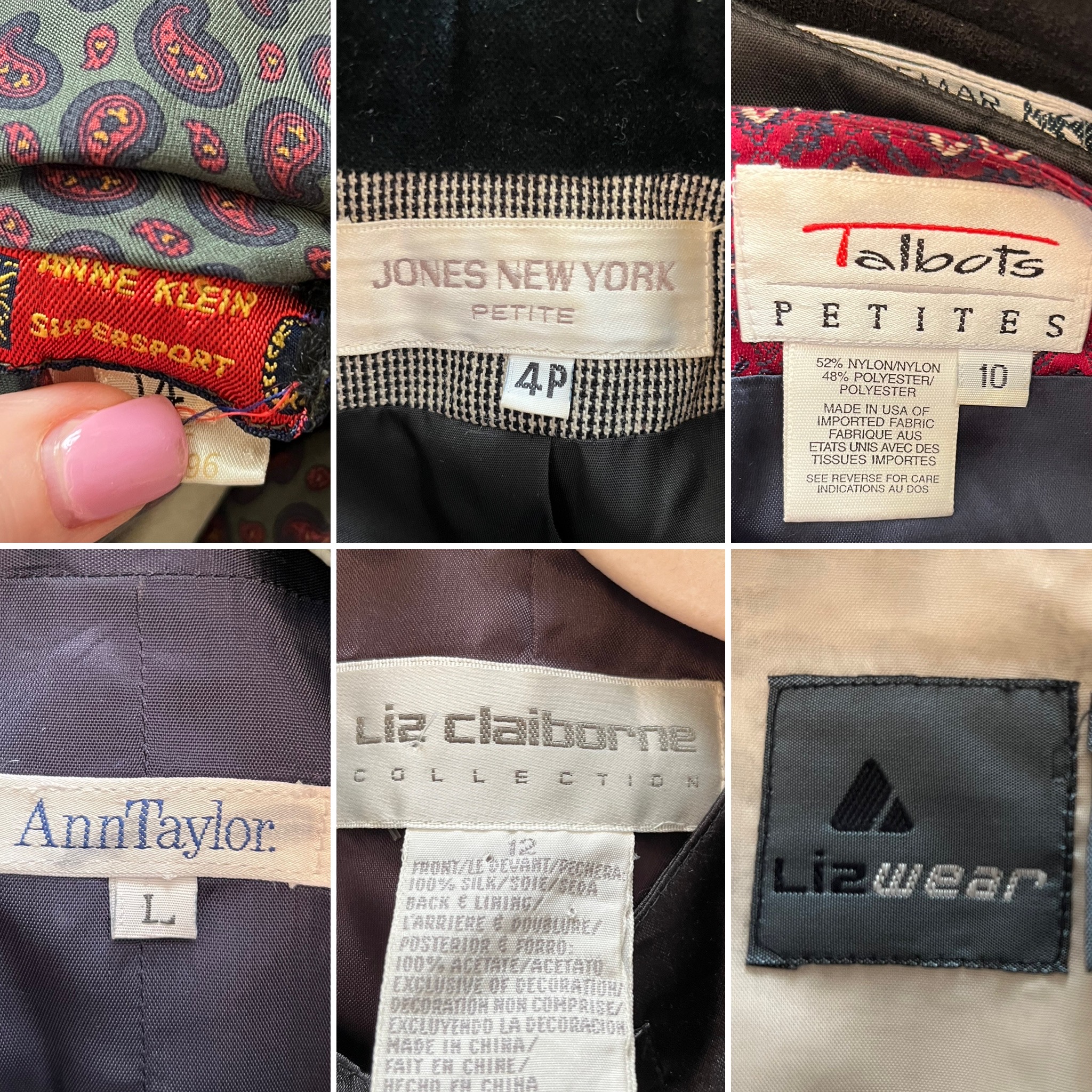The Role of Fabric in Defining Quality in Branded Clothing
The Role of Fabric in Defining Quality in Branded Clothing
Blog Article
The Importance of Lasting Clothes: Just How It Influences the Atmosphere and Your Wardrobe
Sustainable garments is progressively identified for its important duty in lessening the environmental influence of the fast garment industry. By concentrating on green materials and moral manufacturing methods, it deals with pressing eco-friendly problems. This change not just benefits the world but likewise influences consumer options, causing an extra thoughtful strategy to wardrobe administration. Recognizing these dynamics elevates necessary inquiries about style's future and personal duty in forming it.
The Environmental Impact of Fast Style

Advantages of Sustainable Products
Lasting products offer substantial advantages, especially via environmentally friendly textile options that reduce ecological injury. These materials also show durability and long life, minimizing the need for frequent replacements. Consequently, they contribute to a much more lasting apparel industry and advertise liable consumer habits.
Eco-Friendly Fabric Choices
While the garment industry has actually long been connected with fast patterns and environmental harm, the rise of environmentally friendly fabric selections provides a transformative opportunity. Lasting materials such as natural cotton, hemp, and Tencel have obtained popularity because of their lower ecological influence. These materials are commonly created without unsafe pesticides and call for much less water, decreasing their carbon footprint - Branded Clothing. In addition, lots of green textiles are naturally degradable, adding to a round economy by lessening waste. Choosing sustainable materials not only supports eco liable techniques but additionally advertises much healthier environments. As consumers end up being more knowledgeable about their buying power, the demand for environment-friendly materials encourages brand names to innovate and embrace more lasting manufacturing approaches, ultimately benefiting the planet and future generations
Toughness and Long Life Benefits
Many consumers are progressively identifying the resilience and long life benefits of lasting materials in their garments options. Unlike standard fabrics, lasting products such as natural cotton, hemp, and recycled polyester are engineered to stand up to damage, leading to garments that last much longer. This reduced regularity of replacement not only saves customers money gradually however also diminishes waste created by quick style. In addition, sustainable garments commonly employs environment-friendly manufacturing approaches that boost fabric strength, adding to a decrease in the general carbon footprint. By purchasing resilient apparel, consumers can grow a much more lasting wardrobe while appreciating top quality items that keep their visual and capability in time. Resilience and durability stand as vital benefits of selecting lasting products.
Reducing Waste Through Lasting Practices
Minimizing waste in the garment industry can be accomplished with cutting-edge practices such as upcycling and repurposing materials. Furthermore, embracing minimalist wardrobe techniques encourages customers to prioritize high quality over amount, ultimately decreasing apparel usage. With each other, these methods contribute significantly to a more lasting garments design.
Upcycling and Repurposing Materials
Upcycling and repurposing products have emerged as innovative strategies in the garment industry, changing thrown out fabrics right into useful new items. This method not just minimizes waste however additionally encourages creativity and originality in clothes layout. By taking old garments and materials, designers can develop unique items that mirror individual design while decreasing the demand for brand-new resources. Additionally, upcycling frequently calls for less energy and water compared to standard manufacturing processes, substantially lowering the environmental impact of style. As consumers become more familiar with sustainability, the popularity of upcycled clothing remains to increase, promoting a round economic climate. Inevitably, these techniques add to a much more sustainable future, where fashion focuses on ecological health and wellness over rapid manufacturing and usage.

Minimalist Closet Strategies
As individuals significantly seek to reduce their ecological effect, taking on minimal wardrobe methods has acquired grip as an effective strategy to lasting style. These techniques highlight high quality over quantity, encouraging consumers to curate a smaller collection of versatile, sturdy clothes. By concentrating on timeless pieces that can be combined and matched, individuals can lower the regularity of acquisitions and inevitably lower waste.Additionally, minimalism advertises conscious usage, advising shoppers to review the environmental and ethical implications of their options. This approach not just cultivates an extra sustainable way of life yet also simplifies everyday decision-making pertaining to attire. As people welcome minimalist principles, they add to a fashion society that values sustainability and responsible consumerism, eventually resulting in an extra eco-conscious culture.
The Duty of Honest Labor in Sustainable Style
While numerous customers are increasingly familiar with the ecological repercussions of their garments choices, the value of ethical labor practices in lasting style can not be overlooked. Ethical labor encompasses reasonable incomes, safe working problems, and respect for workers' rights, creating the backbone of liable fashion production. Brand names that focus on ethical labor not only uplift neighborhoods but likewise set a requirement for accountability in the industry.Moreover, the combination of moral techniques fosters transparency, allowing customers to make educated choices concerning their acquisitions. This technique contrasts sharply with quick style's exploitative labor versions, which usually focus on profit over people. By supporting companies committed to moral labor, customers add to a system that values human self-respect along with environmental sustainability. Consequently, moral labor is not merely an add-on; it is vital to the more comprehensive goal of lasting style, making sure that the quest for eco-friendliness does not come with the expense of human rights.
The Impact of Sustainable Clothes on Carbon Emissions
Lasting clothes has the potential to considerably reduce carbon emissions connected with the style industry. Standard garment production adds significantly to greenhouse gas exhausts, mainly as a result of energy-intensive manufacturing procedures and using non-renewable resources. On the other hand, lasting style concentrates on green products, such as natural cotton or recycled fibers, which frequently call for much less power to produce.Moreover, sustainable brands often tend to embrace extra reliable production practices, minimizing waste visite site and decreasing total emissions. By prioritizing durability and timeless style, sustainable apparel urges consumers to buy much less often, additional decreasing the carbon impact related to overconsumption.Additionally, many lasting brand names are devoted to openness in their supply chains, making it possible for customers to make informed selections that straighten with their values. Inevitably, shifting in the direction of lasting clothing can lead to a significant reduction in carbon emissions, contributing to a much healthier world and a more lasting future for the fashion sector.
Sustaining Regional Economic Climates With Lasting Options
The change towards sustainable apparel not just addresses environmental issues however additionally significantly benefits neighborhood economic climates. By picking lasting style, consumers commonly sustain regional artisans and small organizations, enhancing area resilience. These enterprises typically run on a smaller sized scale, focusing on craftsmanship and moral methods over mass production.Investing in locally made lasting apparel fosters job creation and stimulates economic growth within communities. As consumers come to be more knowledgeable about the ecological click for source impact of their acquisitions, they progressively seek items that reflect their values. This need motivates local makers to take on sustainable methods, adding to a circular economy.Moreover, sustaining regional businesses lowers transport discharges, straightening with eco-conscious customer habits. The interconnectedness of sustainable clothes and neighborhood economies highlights the vital role that private selections play in advertising both economic and environmental wellness. By cultivating these local connections, neighborhoods can thrive while additionally functioning towards an extra sustainable future.
Changing Your Closet: Tips for a Lasting Wardrobe
As people look for to minimize their ecological impact, changing a wardrobe into a sustainable wardrobe comes to be a vital step. One efficient method is to examine existing apparel, keeping only things that are used on a regular basis and that line up with sustainability goals. Prioritizing top quality over amount is vital; buying resilient items from green brand names can substantially minimize waste.Additionally, including used items can take a breath brand-new life right into a closet while lessening environmental damages. Organizing clothes swaps with friends or donating extra products can additionally advertise sustainability.When purchasing, individuals should seek materials that are organic, recycled, or biodegradable, and prevent fast fashion stores - Branded Clothing. Practicing conscious consumption by attentively taking into consideration each acquisition can add to a more sustainable way of living. By executing these tips, one can produce a wardrobe that reflects personal style while sustaining ecological stewardship
Frequently Asked Concerns
Just How Can I Recognize Lasting Apparel Brands?
To recognize sustainable clothes brand names, one ought to investigate products made news use of, look for certifications like Fair Profession, and examine the brand name's openness concerning their production procedures, labor techniques, and environmental impact, guaranteeing eco-friendly and honest techniques are focused on.
What Are the Prices Related To Sustainable Style?
The costs linked with sustainable style can vary considerably. Higher production expenditures, honest sourcing, and green materials commonly result in raised retail rates, which might prevent some customers while interesting environmentally conscious shoppers.
Can Lasting Apparel Be Fashionable and Trendy?
Lasting garments can without a doubt be trendy and stylish. Designers increasingly focus on innovative materials and honest production methods, proving that style and sustainability can exist together. Consumers currently have varied options that blend visual appeals with ecological consciousness.
Just How Does Washing Clothing Affect Their Sustainability?
Washing clothing substantially effects sustainability by consuming water and power, adding to air pollution, and triggering microplastic release. Constant cleaning can deteriorate fabrics, shortening their life-span and increasing the requirement for replacements, inevitably intensifying environmental problems.
What Is the Life-span of Lasting Clothing Contrasted to Quick Fashion?
The life-span of sustainable apparel generally goes beyond that of quick style items, commonly enduring numerous years as a result of top quality products and workmanship. In contrast, rapid fashion garments may weaken quickly, necessitating more constant replacements. Sustainable clothes is significantly recognized for its important duty in lessening the environmental impact of the rapid fashion industry. While several consumers are significantly mindful of the environmental effects of their apparel choices, the relevance of moral labor techniques in lasting style can not be forgotten. Branded Clothing. Lasting clothes has the possible to considerably decrease carbon emissions associated with the style sector. In contrast, lasting style focuses on environment-friendly materials, such as natural cotton or recycled fibers, which commonly call for much less power to produce.Moreover, sustainable brand names tend to take on much more effective production techniques, decreasing waste and reducing overall emissions. By prioritizing sturdiness and ageless layout, sustainable apparel encourages consumers to buy much less regularly, more lowering the carbon footprint linked with overconsumption.Additionally, numerous sustainable brands are dedicated to openness in their supply chains, allowing consumers to make educated options that line up with their worths
Report this page